How to use SEO to Boost Website Positions to Gain Traffic?
Once, Matt Cutts, the former head of Google's Web Spam team, said, “The best place to hide a dead body is Page Two of Google.” This humorous statement reflects a serious reality: less than 1% of users bother to navigate to the second page of Google results.
If you want to increase your website traffic, your site must land on the first page of Google search results. This is where SEO (Search Engine Optimization) becomes your ultimate tool.

In this article, we will explore how SEO works, its key strategies, and actionable steps to boost your website's ranking.
Whether you're a beginner or looking to refine your approach, this comprehensive guide will provide valuable insights.
What Is SEO & Why Does It Matter?
I believe you already know about SEO because you are reading this post. In case you don’t, let me tell you that SEO stands for Search Engine Optimization.
As the name explains, these are the tips or series of actions taken to make your website search engine-friendly.
The purpose is to comply with the Google search indexing algorithms to make it believe that your website deserves a better rank in search results.
The better the rank, the more the chunk of traffic your website will get. So if you want more organic traffic, you need SEO strategies. There are different types of SEO strategies that you can use to boost your website position to gain more traffic.
Parts of SEO
There are three main parts of SEO strategies that you can use to boost your website position to gain more traffic.
- On-Page SEO - Involves optimizing elements within your website, including content, keywords, and design.
- Technical SEO - This focuses on the backend of your website, including speed, security, and mobile-friendliness.
- Off-Page SEO - This focuses on building backlinks and promoting your website externally to boost authority and relevance.
Let us cover all these major SEO strategies in detail.
On-Page SEO
Betterment starts from inside, that’s a saying but it applies to SEO as well. If you want to boost your website SEO, you need to improve your website first. On-page SEO is now the most important one because recent updates from Google Search have revealed that it’s giving importance to content quality and authority.
There are various factors that you need to keep in mind while doing on-page SEO of your website. I’ll list down some of these below:
1. Keyword Optimization
Gone are the days when stuffing keywords in irrelevant content could boost your rank. Google has become smarter and now evaluates:
- Relevance of the Content: Does the content address user intent?
- Natural Use of Keywords: Are the keywords blended seamlessly into the text?
Tips for Effective Keyword Optimization:
- Use Keywords Naturally: Include your target keywords in a way that fits the context.
- Avoid Overusing Keywords: Keyword stuffing can trigger penalties from Google.
- Focus on LSI Keywords: Add related terms to support the primary keyword and enhance content relevance.
Caution: Google easily detects over-optimized content, which may lead to de-ranking during algorithm updates.
2. Quality Readable Content
As we know, “Content is King” but only if the king wins the people’s hearts. High-quality, readable content is essential for SEO success.
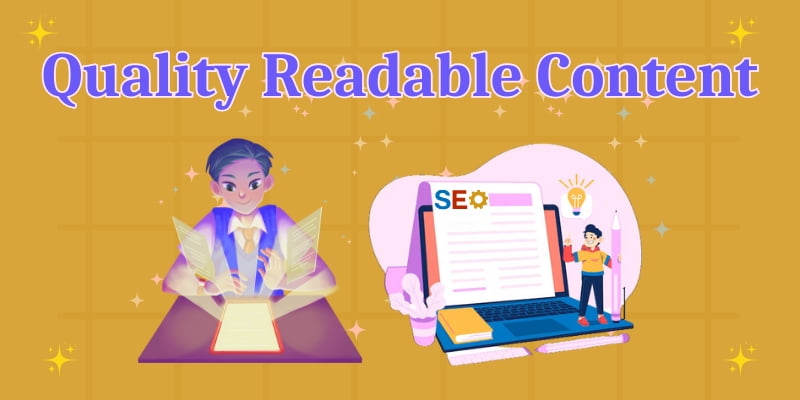
What Makes Content Quality Stand Out?
- Informative: It should address users’ queries and provide valuable insights.
- Engaging: Content that keeps readers interested boosts dwell time—a factor Google considers for ranking.
- Simple Language: Use easy vocabulary and short sentences for better readability.
Tools to Ensure Readability:
- Hemingway App: Highlights hard-to-read sentences and helps simplify them.
- AI Paraphrasers: Use these tools to make complex sentences easier to understand.
Key Point: Readable content not only engages users but also increases your chances of ranking higher.
3. Freshness and Originality of Content
Google loves content that is:
- Fresh: Posts that cover new perspectives or updated information.
- Original: Unique content that hasn’t been copied or spun from other sources.
Why Originality Matters
- Plagiarized Content is Penalized: Duplicate content can result in de-ranking or exclusion from search results.
- Unique Insights Drive Value: Readers and search engines prefer content with fresh perspectives.
How to Ensure Fresh and Original Content:
- Research Deeply: Post unique information users haven’t seen before.
- Add Value: If a topic is commonly covered (e.g., “5 Tips to Write an Essay”), provide novel tips or more comprehensive explanations to stand out.
- Use Plagiarism Checkers: You can opt for the best plagiarism checker to assess the originality of your content before posting it on your website.
4. Optimize Media
Multimedia content enhances user engagement but requires proper optimization to improve SEO.
How to Optimize Media:
- Images: Compress images to reduce page load time. Use descriptive alt tags with keywords to make images SEO-friendly.
- Videos: Add transcriptions for accessibility and keyword optimization. Use compelling titles and descriptions optimized for search engines.
5. Meta Tags and Descriptions
Meta tags are the first impression of your content in search results. Write compelling meta titles and descriptions to attract clicks and improve ranking.
Tips for Meta Tags:
- Include your target keywords in both the meta title and description.
- Keep them concise: Meta titles should be under 60 characters, and descriptions should be within 155 to 160 characters.
- Focus on creating click-worthy descriptions that summarize your content.
You can also generate friendly metadata with ChatGPT too!
Technical SEO
Technical SEO, once considered part of On-Page SEO, is now treated as a separate domain because of its specialized focus. It primarily deals with a website's technical performance, which significantly impacts how search engines and users perceive it.
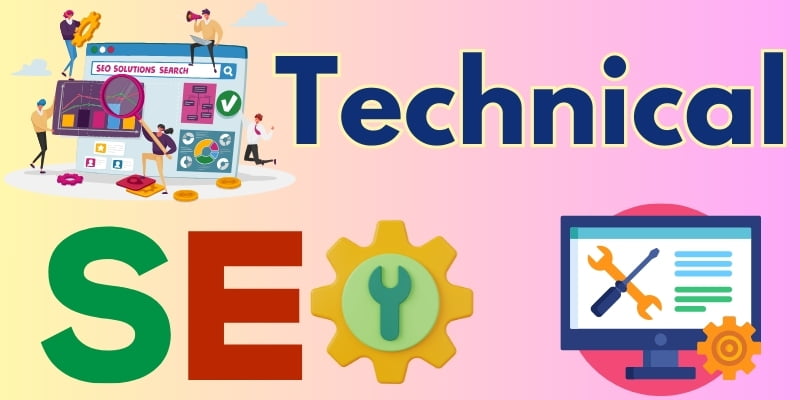
Here’s a breakdown of key aspects of technical SEO:
Importance of Technical SEO
Google uses many factors to evaluate and rank websites, and technical SEO ensures your website meets these expectations. Some important points include:
- Performance Over Content: Even high-quality content can fail if the website's technical aspects are not up to standard.
- Search Engine Crawling and Indexing: Technical SEO ensures search engines can easily crawl and index your pages, making them accessible to users.
Key Takeaway: Well guys, according to an SEO agency in Singapore, regular audits are essential for identifying and addressing technical flaws that hinder SEO performance. So, without strong technical SEO, even the best content might not reach your audience.
Let us cover the technical SEO strategies on which you guys need to focus on:
1. Website Speed Optimization
A slow-loading website frustrates users and harms your rankings. Optimizing your website’s speed is critical for a better user experience and improved SEO.
How to Optimize Website Speed:
- Compress images using tools like TinyPNG or Squoosh.
- Enable browser caching for faster loading on repeat visits.
- Minify HTML, CSS, and JavaScript files using tools like Minify or WP Rocket.
- Use a CDN like Cloudflare to deliver content faster globally.
2. Mobile-Friendliness
With most users accessing the internet via mobile devices, ensuring your site works perfectly on all screen sizes is non-negotiable.
How to Optimize for Mobile:
- Use responsive web design to adjust your site for all devices automatically.
- Test mobile usability using Google’s Mobile-Friendly Test.
- Optimize touch elements like buttons and navigation menus for smaller screens.
3. Fix Crawl Errors
Crawl errors prevent search engines from indexing your site properly. Fixing these ensures all important pages are accessible to search engines and users.
How to Fix Crawl Errors:
- Use Google Search Console to identify errors.
- Fix 404 errors by redirecting them to relevant pages with 301 redirects.
- Ensure your robots.txt file isn’t blocking essential pages from being crawled.
4. XML Sitemap and Robots.txt Optimization
An updated sitemap and well-configured robots.txt file guide search engines to your website's most important pages.
How to Optimize Sitemap and Robots.txt:
- Submit an updated XML sitemap through Google Search Console.
- Block unnecessary or duplicate pages in robots.txt to save crawl budget.
- Use Screaming Frog to ensure your sitemap and robots.txt file are functioning correctly.
5. Structured Data Markup
Structured data helps search engines understand your content better and can increase the likelihood of rich snippets appearing in search results.
How to Add Structured Data:
- Use schema markup for reviews, FAQs, products, or articles.
- Test your markup with Google’s Rich Results Test.
- Implement structured data using plugins (for WordPress) or manually in your HTML code.
6. SSL Certificate (HTTPS)
HTTPS is a ranking factor and a necessity to build user trust by ensuring a secure connection.
How to Implement HTTPS:
- Purchase and install an SSL certificate from a trusted provider.
- Redirect HTTP pages to HTTPS using 301 redirects.
- Use tools like SSL Labs to ensure your SSL configuration is correct.
7. Canonical Tags
Canonical tags prevent duplicate content issues by specifying the preferred version of a webpage.
How to Use Canonical Tags:
- Add canonical tags to duplicate or similar pages pointing to the main URL.
- Check for duplicate tags using SEO tools like Ahrefs.
- Regularly audit and update tags when content changes.
8. Broken Link Fixing
Broken links can negatively affect user experience and SEO. Fixing them ensures smooth navigation and better rankings.
How to Fix Broken Links:
- Audit your site for broken links using tools like Screaming Frog or Ahrefs.
- Replace broken links with updated URLs or use 301 redirects.
- Regularly check for broken links using DAPA checker or similar tools.
9. Core Web Vitals Optimization
Core Web Vitals are performance metrics Google uses to measure user experience. Optimizing them boosts SEO and engagement.
How to Improve Core Web Vitals:
- Optimize Largest Contentful Paint (LCP) by improving page load speed.
- Minimize First Input Delay (FID) by reducing third-party scripts.
- Reduce Cumulative Layout Shift (CLS) by reserving space for images and ads.
Off-Page SEO
Once your website is optimized with strong On-Page SEO and Technical SEO, it’s time to shift focus to Off-Page SEO—the marketing aspect of SEO. Off-Page SEO primarily revolves around creating quality backlinks to boost your website’s authority and rankings on Google.
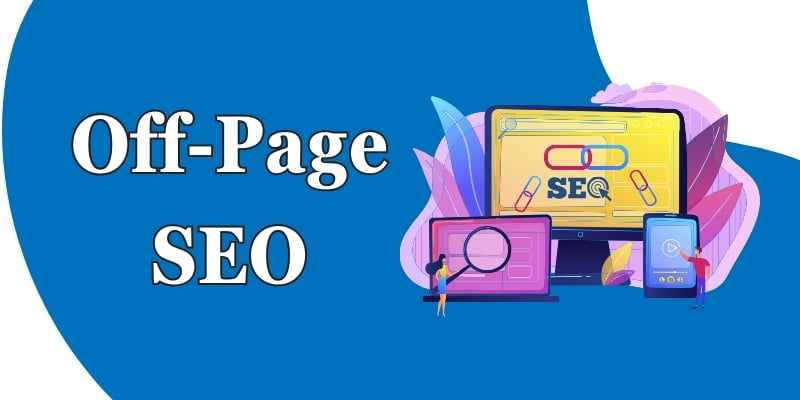
Off-Page SEO involves activities done outside your website to improve its position in search engine rankings. The primary focus is on:
- Backlink Creation: Obtaining links from other websites to your own.
- Brand Mentions: Promoting your website through mentions on other platforms.
Key Point: Backlinks are crucial, though Google often emphasizes their quality over quantity.
1. Build High-Quality Backlinks
When trusted websites link to your content, it tells search engines that your site is reliable and worth ranking higher.
Steps to Get Quality Backlinks:
- Write guest posts for popular blogs in your field.
- Use a DAPA checker to find websites with strong domain and page authority for link building.
- Collaborate with experts in your industry for content sharing or link exchanges.
- Share valuable content on platforms like Quora or Reddit to earn natural backlinks.
2. Engage on Social Media
Social media boosts your content's visibility and helps you connect with your audience. It also drives traffic to your website, which can improve your rankings.
How to Use Social Media for SEO:
- Share your blog posts, videos, and infographics regularly.
- Reply quickly to comments and messages to build trust with your audience.
- Join groups or forums in your niche and share helpful advice.
3. Get Listed in Directories
Directory listings make it easier for people to find your business online. This strategy works especially well if you're targeting a local audience.
Steps to Use Directory Listings:
- Submit your business to Google My Business and Bing Places.
- Add your details to trusted directories like Yelp, Yellow Pages, or niche-specific platforms.
- Make sure your business name, address, and phone number are consistent across all listings.
4. Collaborations
Partnering with influencers in your industry helps you reach more people and builds credibility for your brand.
How to Work with Influencers:
- Find influencers who align with your niche and audience.
- Offer them free products or services in exchange for a review or mention.
- Collaborate on content like blog posts, videos, or live sessions.
5. Forum and Community Participation
Forums and online communities are great places to share your expertise and promote your website.
How to Participate Effectively:
- Join forums like Reddit, Quora, or niche-specific communities.
- Answer questions and provide helpful advice while linking to your content when relevant.
- Avoid spamming; focus on adding real value to discussions.
Expert Tips for Boosting SEO Performance
Here are expert tips for boosting SEO performance, categorized by On-Page SEO, Technical SEO, and Off-Page SEO, along with the expert names who are known for providing such insights:
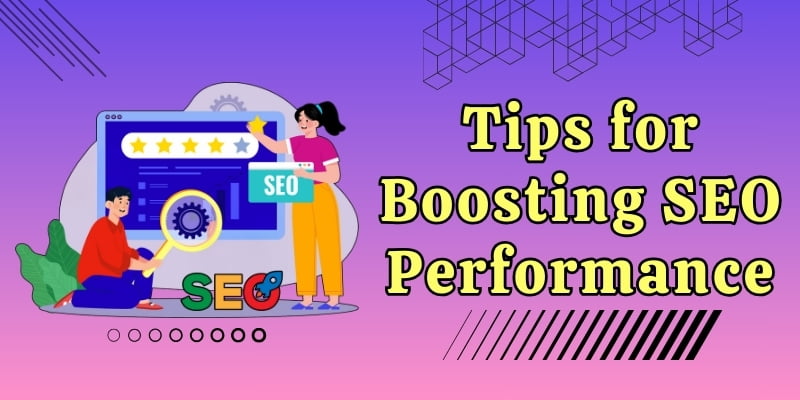
1. Optimize for User Intent (Neil Patel)
Tip: Neil Patel emphasizes the importance of understanding user intent—matching your content with the exact needs and search queries of users.
Action: Focus on the type of content users are searching for—informational, transactional, or navigational—and deliver it clearly and effectively.
2. Use Semantic HTML Tags (Rand Fishkin)
Tip: Rand Fishkin recommends using semantic HTML tags like <h1>, <h2>, <strong>, and <em> to help search engines better understand the structure and relevance of your content.
Action: Implement appropriate header tags, structured data, and well-organized content to make your page more scannable for both users and search engines.
3. Optimize Your Meta Tags (Brian Dean)
Tip: Brian Dean suggests writing compelling meta titles and descriptions to improve click-through rates (CTR) and rankings.
Action: Ensure each page has a unique meta title and description, incorporating target keywords and making them enticing to users.
4. Create High-Quality, Long-Form Content (HubSpot)
Tip: HubSpot advises creating long-form content (1,500+ words) that covers a topic in-depth and provides genuine value to your audience.
Action: Write comprehensive, informative, and engaging content that answers user questions fully.
5. Improve Image SEO (Danny Sullivan)
Tip: Danny Sullivan, a Google Search Liaison, recommends optimizing images by using descriptive alt tags and compressing them to enhance site speed.
Action: Use descriptive filenames and alt text to help Google understand your images, and compress them for faster loading.
6. Improve Site Speed (John Mueller)
Tip: John Mueller, a Google Search Advocate, emphasizes the importance of site speed as a ranking factor.
Action: Use tools like Google PageSpeed Insights to identify and fix issues like large images or slow-loading scripts.
7. Mobile Optimization (Danny Sullivan)
Tip: Danny Sullivan stresses the necessity of mobile-friendly websites, as Google uses mobile-first indexing.
Action: Ensure your website is responsive and adapts seamlessly to mobile devices, optimizing load times and user experience.
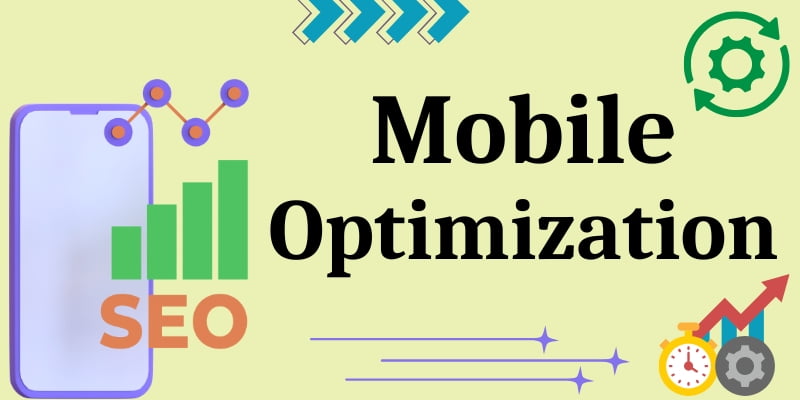
8. Use SSL Certificates (Moz)
Tip: Moz's experts recommend using SSL certificates (HTTPS) to improve security and rankings.
Action: Move your site to HTTPS to ensure data privacy and gain trust signals from both users and search engines.
9. Fix Crawl Errors (Aleyda Solis)
Tip: SEO expert Aleyda Solis advises checking Google Search Console for crawl errors and fixing broken links to enhance site accessibility and indexing.
Action: Regularly monitor your website for crawl errors and fix broken links, redirects, or incorrect sitemaps.
10. Structured Data and Schema Markup (Glenn Gabe)
Tip: Glenn Gabe recommends using structured data (schema markup) to help Google better understand your content and improve rich snippets.
Action: Implement structured data in your site to highlight key information like product details, reviews, and events.
11. Focus on Quality Backlinks (Rand Fishkin)
Tip: Rand Fishkin advocates building quality backlinks from authoritative, relevant websites rather than focusing on sheer quantity.
Action: Reach out to high-authority sites in your niche for guest posts, collaborations, or mentions that provide natural, high-quality backlinks.
12. Use Social Signals (Neil Patel)
Tip: Neil Patel suggests using social media to boost brand visibility and generate backlinks indirectly.
Action: Share your content across social platforms to increase engagement and encourage others to share your content.
13. Build Relationships with Influencers (Brian Dean)
Tip: Brian Dean recommends building relationships with industry influencers to earn backlinks and enhance brand visibility.
Action: Collaborate with influencers to share your content and earn quality backlinks to your site.
14. Use Local SEO for Backlinking (Moz)
Tip: Moz's experts suggest leveraging local SEO strategies by obtaining backlinks from local businesses and directories to improve local search rankings.
Action: Get listed in local business directories and engage in community-based content marketing for better local SEO.
15. Monitor Brand Mentions (Martha van Berkel)
Tip: Martha van Berkel, a leading figure in SEO, recommends tracking brand mentions across the web, even if they don’t link back to your site, as Google treats mentions as trust signals.
Action: Use tools like Google Alerts to monitor mentions and reach out to request backlinks where appropriate.
Pro Tip: If you want a streamlined way to analyze, track, and improve all three areas of SEO, tools like SearchAtlas can be a game-changer. From keyword research to backlink monitoring and technical site audits, it provides an all-in-one SEO platform that helps businesses move up the rankings faster.
The End Note
If you want to attract tons of organic traffic, you have no solution but SEO. Better SEO strategies can bring you up in search results which can ultimately bring more traffic to your website.
On-page SEO is a good way to start optimizing your website and then resolving technical issues your website will be ready for off-page SEO. Good luck with your SEO journey!




Please Write Your Comments